According to this plan, by the end of 2025, university training units under the Ministry of Education and Training will simultaneously implement a roadmap to increase the level of financial autonomy.
AUTONOMY FROM REGULAR EXPENDITURE GUARANTEE OR ABOVE
Recently, the Ministry of Home Affairs issued a document on the arrangement of public service units under the Ministry of Education and Training. Accordingly, the Ministry of Home Affairs requested the Ministry of Education and Training to develop a plan for the university education network and submit it to the Prime Minister according to regulations.
Notable in this document is the plan to arrange and increase the level of financial autonomy for public service units. Currently, the Ministry of Education and Training has 61 public service units, of which 3 units belong to the organizational structure of the Ministry, 47 units belong to the Ministry, 4 units belong to the Ministry's office and 7 units belong to the departments. According to the proposed plan to arrange public service units reported, the Ministry of Education and Training is responsible for arranging and reducing 6 public service units.
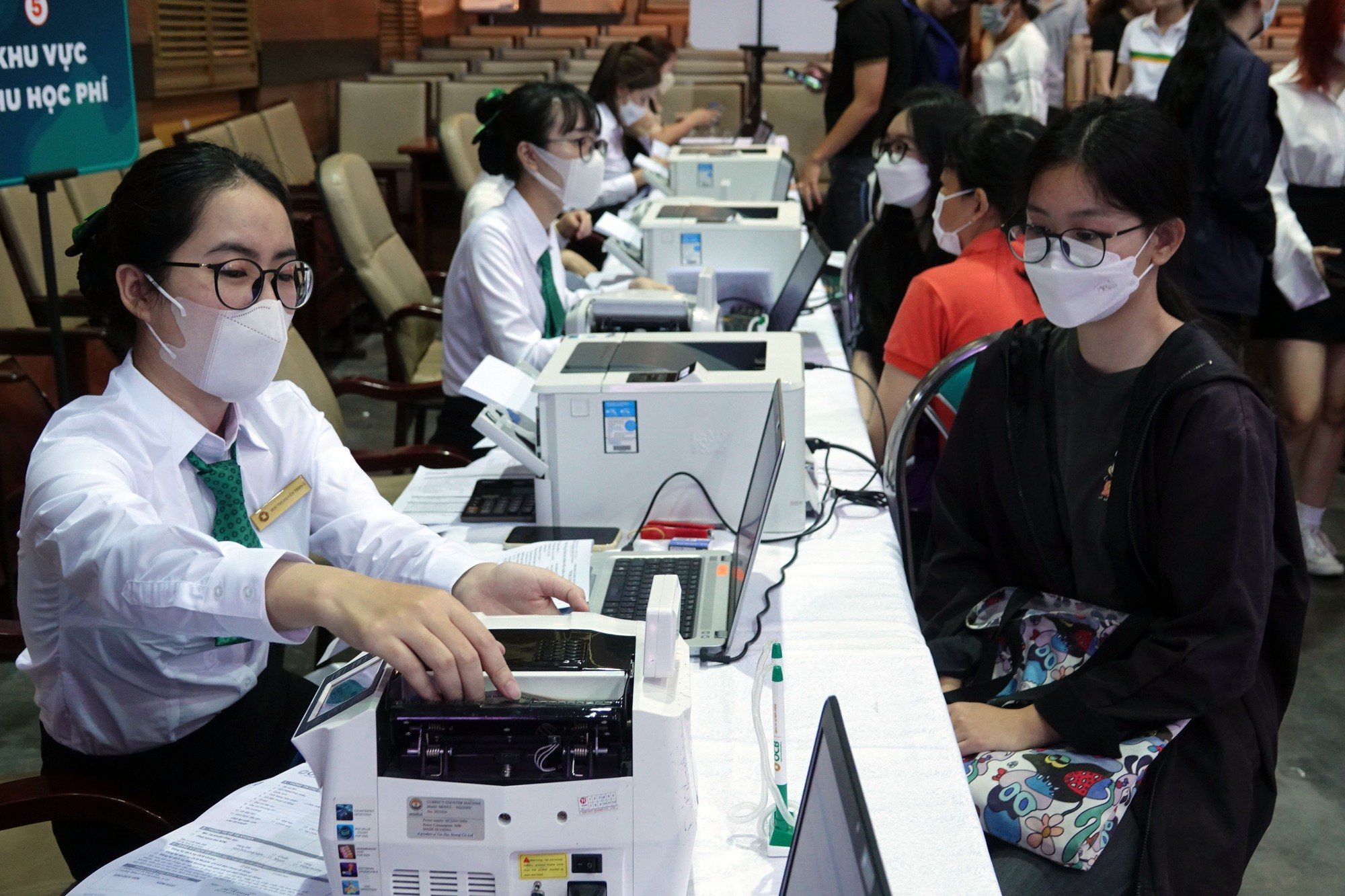
Students pay tuition at an autonomous university in Ho Chi Minh City.
Regarding improving the level of financial autonomy, the Ministry of Home Affairs requested the Ministry of Education and Training to direct public service units to develop and implement a roadmap for financial autonomy. In particular, for public service units under departments and offices under the Ministry, this must be completed in the first quarter of 2024. Public service units under the Ministry need to develop a plan for arrangement and reorganization, submit it to competent authorities for consideration and decision, and complete it in 2024.
According to the plan to arrange public service units under the Ministry of Education and Training, by the end of 2025, 24 highereducation institutions need to implement a roadmap to increase the level of financial autonomy, from the level of ensuring regular expenditures and above. Specifically, including the universities of Da Nang, Hue, Thai Nguyen; the universities of Viet Duc, Da Lat, Dong Thap, Transport, Kien Giang, Mining - Geology, Industrial Fine Arts, Nha Trang, Nong Lam Ho Chi Minh City, Quy Nhon, Hanoi Pedagogical University, Hanoi Pedagogical University 2, Hung Yen Technical Pedagogical University, Central Pedagogical University of Arts, Ho Chi Minh City Pedagogical University, Hanoi Pedagogical University of Sports and Physical Education, Ho Chi Minh City Physical Education and Physical Education, Tay Bac, Tay Nguyen, Vinh, and Construction.
Also under the Ministry of Education and Training, 11 other higher education institutions continue to maintain the autonomous school model, including: Hanoi University of Science and Technology, Ho Chi Minh City University of Economics ; the following universities: Hanoi, National Economics, Ho Chi Minh City Law, Hanoi Open, Ho Chi Minh City Open, Foreign Trade, Ho Chi Minh City Technical Education, Commerce, Can Tho.
WHY IS THERE A RECOMMENDATION THAT AUTONOMY SHOULD NOT BE ALLOWED?
Meanwhile, in December 2023, the Association of Vietnamese Universities and Colleges reported to the Prime Minister on the issue of university autonomy in Vietnam. Accordingly, the association recommended that university autonomy should not be implemented simultaneously in all schools but that there should be a suitable roadmap. In addition, the state needs to have different levels of autonomy for university education institutions.
Also in the report, the association said that through a number of recent surveys, it can be seen that many universities, including large universities that have piloted autonomy, are not yet ready to voluntarily switch to an autonomous mechanism. Therefore, the association believes that the state should immediately divide public universities into three groups: autonomous schools, semi-autonomous schools, and non-autonomous schools.
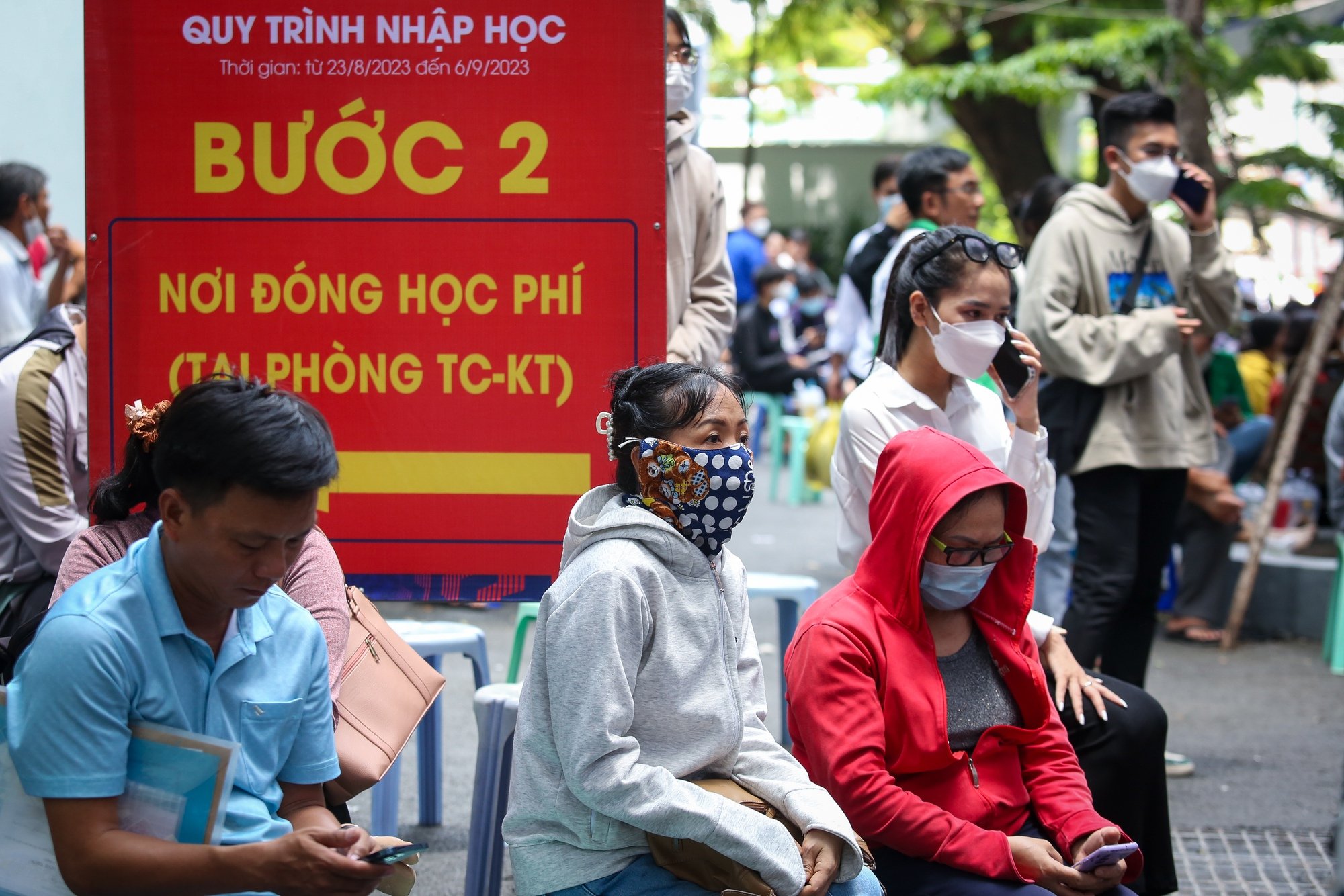
Many schools do not want autonomy to avoid budget cuts, which would result in increased student income.
ILLUSTRATION: NHAT THINH
Regarding finance, the association also recommends not equating autonomy with self-sufficiency in resources as is currently considered. The State should not cut the budget of autonomous universities, but on the contrary, it should increase budget support for those schools that have successfully implemented the university autonomy policy, considering them as places that deserve the State's investment to quickly improve the quality of these schools, helping them soon become national key schools.
Sharing more with Thanh Nien reporter, Dr. Vu Ngoc Hoang, Chairman of the Association of Vietnamese Universities and Colleges, said that university autonomy is the most important feature of university governance. "Not being autonomous means not being mature enough. Sooner or later, all universities and colleges need to be autonomous and fully autonomous," Mr. Hoang said and commented: "The autonomy capacity of schools is not uniform, some schools are sufficient but others are not sufficient or weaker, still have shortcomings, need to be strengthened. Therefore, it should not be carried out simultaneously, equally. Units that are strong enough are fully autonomous, weaker ones are partially autonomous, and weaker ones are not yet given autonomy...".
Regarding finance, Dr. Vu Ngoc Hoang said: "If it is called public, the state must take more responsibility in financial support. All countries do the same, usually the budget ensures most of the spending, and the collection from students is at a moderate level. Do not use autonomy as an excuse to cut the funding that has been provided for a long time. By doing so, many schools still do not want to be autonomous to avoid being cut, thereby having to increase the collection from students and lack funds to improve quality."
Agreeing with the above recommendation, the principal of a public university assigned to pilot the implementation of autonomy for many years also said that there should be many levels of autonomy for schools to choose from: regular spending or comprehensive autonomy. Corresponding to the level of autonomy, schools are allowed to decide on different contents depending on the requirements of development. "University autonomy needs to be implemented in a step-by-step roadmap, with support mechanisms for specific training sectors and budget investment for key sectors and schools," said this principal.
Source link




![[Photo] Prime Minister Pham Minh Chinh and Prime Minister of the Kingdom of Thailand Paetongtarn Shinawatra attend the Vietnam-Thailand Business Forum 2025](https://vphoto.vietnam.vn/thumb/1200x675/vietnam/resource/IMAGE/2025/5/16/1cdfce54d25c48a68ae6fb9204f2171a)







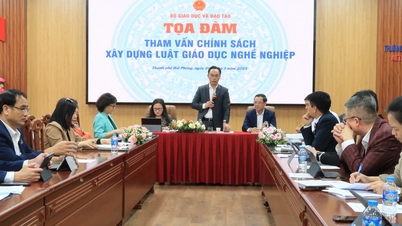





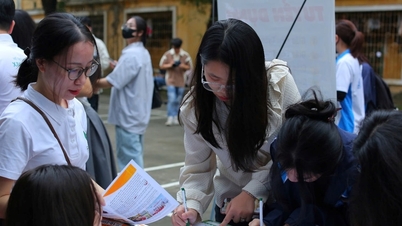
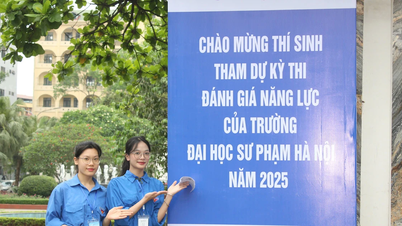




![[Video] From the 2026-2027 school year, it is expected that enrollment at all levels will be abolished according to administrative boundaries.](https://vphoto.vietnam.vn/thumb/402x226/vietnam/resource/IMAGE/2025/5/17/980466fb5089407da917f9345284639b)
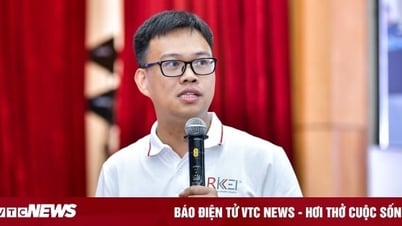










![[Photo] President Luong Cuong receives Prime Minister of the Kingdom of Thailand Paetongtarn Shinawatra](https://vphoto.vietnam.vn/thumb/1200x675/vietnam/resource/IMAGE/2025/5/16/52c73b27198a4e12bd6a903d1c218846)


















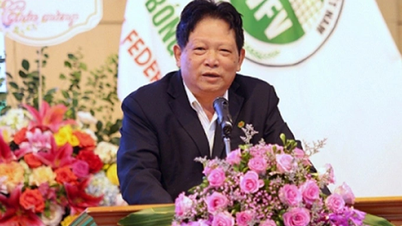











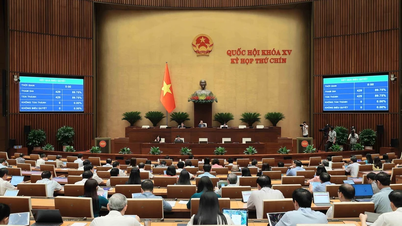
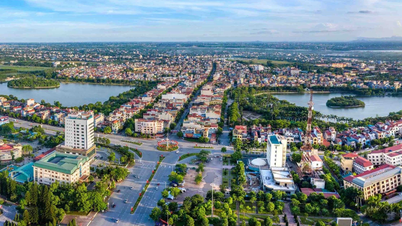



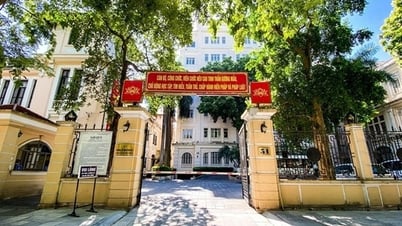





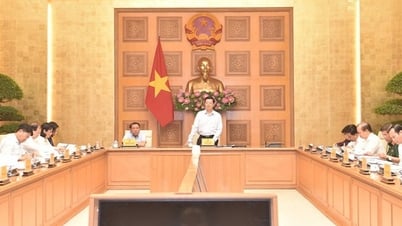


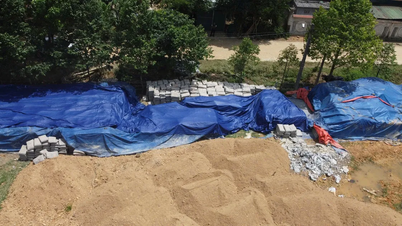






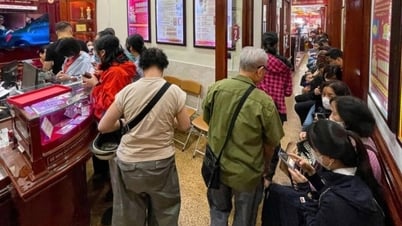








Comment (0)